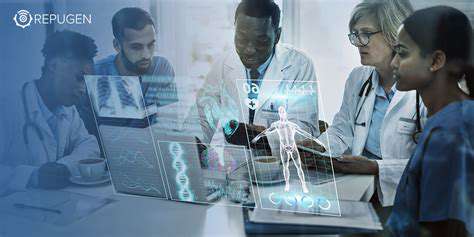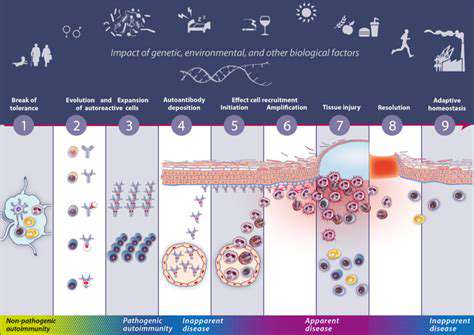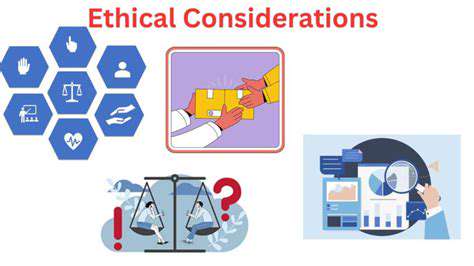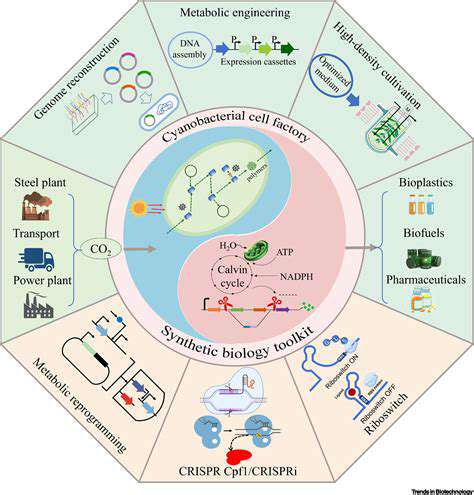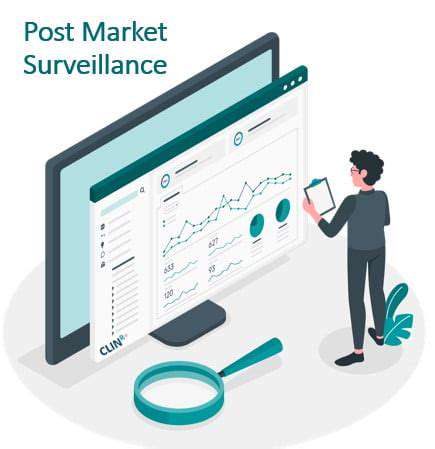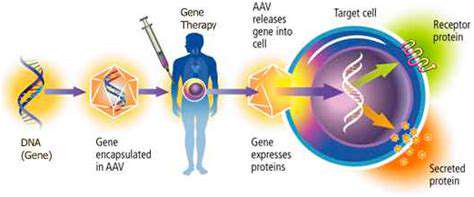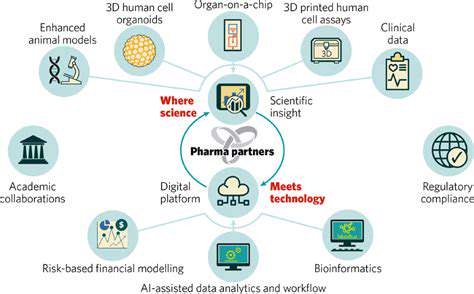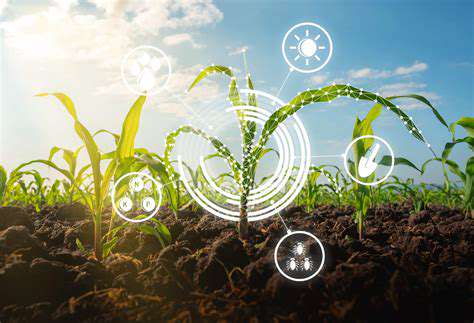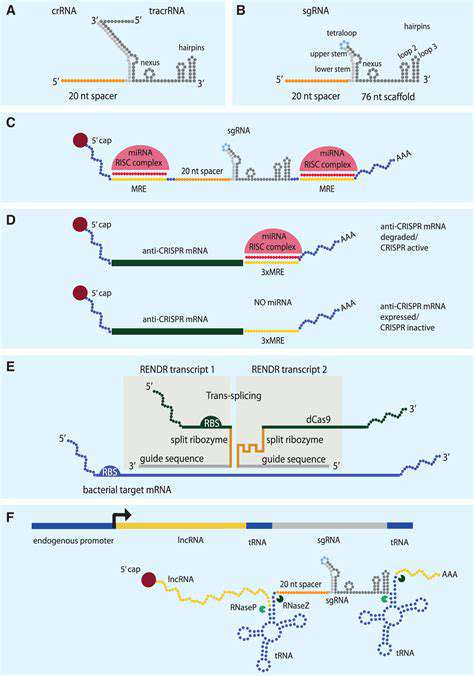Introduction to Synthetic Biology in Environmental Monitoring
Defining Synthetic Biology
Synthetic biology, a rapidly evolving field, harnesses engineering principles to design and construct novel biological parts, devices, and systems. It involves re-programming existing biological systems or creating entirely new ones with specific functions. This approach allows for the creation of organisms with enhanced capabilities, opening up exciting possibilities in diverse fields, including environmental monitoring.
Understanding the foundational principles of synthetic biology is crucial for appreciating its applications. The ability to program organisms to respond to environmental cues or produce specific indicators allows for precise and targeted detection of pollutants or changes in ecosystem health. This precision, combined with the potential for miniaturization, makes synthetic biology a potentially powerful tool in environmental monitoring.
Applications in Environmental Monitoring
Synthetic biology offers a wide array of applications in environmental monitoring, ranging from detecting pollutants to assessing ecosystem health. One example involves genetically modifying microorganisms to detect specific pollutants, such as heavy metals or pesticides, in water or soil samples. These engineered organisms can provide rapid and sensitive detection, often surpassing traditional methods in terms of speed and cost-effectiveness.
Another application involves creating organisms that produce bioindicators. These organisms can be engineered to respond to changes in environmental parameters, such as temperature, pH, or nutrient levels, by producing specific signals. These signals can then be monitored to assess the overall health of an ecosystem or identify areas experiencing pollution or stress.
Advantages of Synthetic Biology in Environmental Monitoring
Synthetic biology offers several advantages over traditional environmental monitoring methods. One key advantage is the enhanced sensitivity and specificity of detection. Engineered organisms can be designed to target particular pollutants or environmental changes, reducing false positives and improving the accuracy of results. This heightened specificity is crucial in complex environmental matrices where multiple substances may be present.
Furthermore, synthetic biology enables rapid detection, often providing results in hours or days compared to the weeks or months required by conventional methods. This speed is crucial for timely interventions in environmental emergencies or for tracking the efficacy of remediation strategies.
Challenges and Considerations
Despite its potential, synthetic biology faces several challenges in environmental monitoring. One significant consideration is the potential for unintended consequences. The introduction of genetically modified organisms into the environment requires careful evaluation of potential ecological impacts. Long-term effects on native species and the overall ecosystem balance need thorough investigation and mitigation strategies.
Another key consideration is the ethical implications of using synthetic biology in environmental monitoring. Concerns about biosafety, the potential for misuse, and appropriate regulatory frameworks need careful consideration and discussion. Addressing these challenges is essential for responsible development and deployment of synthetic biology in environmental applications.
Future Directions and Research
Future research in synthetic biology for environmental monitoring will likely focus on developing more robust and adaptable organisms. This includes creating organisms that can withstand harsh environmental conditions, survive for extended periods, and maintain their function under fluctuating environmental pressures. Furthermore, the development of more user-friendly platforms for designing and implementing synthetic biological systems is crucial to increasing accessibility and facilitating broader adoption.
The integration of synthetic biology with other emerging technologies, such as nanotechnology and advanced sensor systems, holds significant promise for creating innovative solutions for environmental monitoring. This interdisciplinary approach will likely pave the way for more sophisticated, comprehensive, and cost-effective solutions for addressing environmental challenges in the future.
Developing Biosensors for Pollutant Detection
Biosensor Design and Materials
Biosensors for pollutant detection rely on the intricate design of sensing elements that interact with the target pollutants. This involves carefully selecting biorecognition elements, such as enzymes, antibodies, or aptamers, that exhibit high specificity and sensitivity to particular pollutants. The choice of materials for the sensor platform is equally crucial, as it needs to be compatible with the biorecognition element, provide stability in the target environment, and facilitate signal transduction for accurate detection. Different materials like polymers, nanomaterials, and conductive surfaces offer varying advantages and are often combined to optimize the sensor's performance.
The integration of these biorecognition elements and materials into a functional biosensor requires precise fabrication techniques. This often involves immobilizing the biorecognition element onto a suitable platform, ensuring optimal accessibility for the target pollutant. Advanced techniques like microfluidics and nanotechnology play a significant role in miniaturizing and enhancing the sensitivity of the biosensor, ultimately leading to portable and user-friendly devices for environmental monitoring.
Signal Transduction Mechanisms
A critical aspect of biosensor development is the efficient transduction of the interaction between the biorecognition element and the pollutant into a measurable signal. Different transduction mechanisms exist, each with its own advantages and limitations. Electrochemical methods, for example, utilize changes in current or voltage to detect the presence and concentration of pollutants. Optical methods, on the other hand, rely on changes in light absorption or fluorescence to quantify the pollutant. These methods translate the biological interaction into a measurable signal that can be easily interpreted and quantified.
The selection of the appropriate transduction method depends on the specific pollutant being targeted, the desired detection range, and the available resources. Choosing a transduction mechanism that is both sensitive and specific to the target pollutant is essential for accurate and reliable detection results. Furthermore, the signal transduction method needs to be robust enough to withstand various environmental conditions, providing long-term stability and reliability for the biosensor.
Synthetic Biology Approaches
Synthetic biology offers powerful tools to engineer biosensors with enhanced performance. By manipulating biological components, such as modifying enzymes or creating novel biorecognition elements, synthetic biology can improve the sensitivity, selectivity, and robustness of biosensor systems. This involves engineering microorganisms to produce specific proteins that bind to pollutants, thereby allowing for highly sensitive detection. The ability to customize these biological components leads to biosensors with tailored characteristics to meet specific environmental monitoring needs.
Moreover, the use of genetic circuits allows for the creation of biosensors that exhibit sophisticated signal processing capabilities. This can lead to improved signal amplification and reduced background noise, enhancing the accuracy and reliability of the detection process. Employing synthetic biology techniques enables the creation of highly adaptable and versatile biosensors that can be tailored for a wide range of pollutants, providing a powerful tool for environmental monitoring and management.
Environmental Applications and Challenges
Biosensors hold immense potential for various environmental applications, including monitoring water quality, detecting pollutants in air and soil, and assessing the impact of industrial activities. The ability to deploy these sensors in remote or hazardous locations provides valuable data for environmental management and pollution control efforts. By providing real-time data on pollutant levels, biosensors empower timely intervention and mitigation strategies to protect ecosystems and human health. However, challenges remain in terms of developing robust and cost-effective biosensors that can function reliably under diverse environmental conditions. The stability and longevity of biosensors in harsh environments pose challenges that need to be addressed for widespread adoption.
Furthermore, the specificity and sensitivity of biosensors need to be optimized for a wide range of pollutants. Ensuring accurate quantification across different concentration ranges and diverse environmental matrices is also crucial. Addressing these challenges requires continued research and development to create biosensors capable of providing reliable and comprehensive environmental monitoring data, supporting effective environmental management strategies.
Remediating Environmental Damage with Synthetic Microbial Communities

Assessing the Scope of the Damage
Environmental damage encompasses a wide range of problems, from localized pollution incidents to large-scale ecological disasters. A thorough assessment is crucial to understanding the extent of the harm, identifying the affected ecosystems, and pinpointing the source of the contamination. This initial step involves detailed surveys, sampling, and analysis to determine the nature and severity of the damage. Accurate data collection is paramount for developing effective remediation strategies. Detailed maps and reports are vital for tracking the progress of the remediation process.
The assessment process must also consider the long-term impacts of the damage. Understanding the potential for cascading effects is essential for implementing sustainable solutions. This includes considering the impact on biodiversity, water quality, and human health. The assessment should also incorporate stakeholder input, including local communities and experts in relevant fields.
Implementing Targeted Remediation Strategies
Once the scope of the damage is understood, targeted remediation strategies can be developed. These strategies should be tailored to the specific type of damage, taking into account the characteristics of the affected environment and the resources available. This may involve physical removal of pollutants, biological remediation techniques, or a combination of both. The selection of the appropriate methods is critical to ensuring both effectiveness and cost-efficiency.
Careful consideration of the potential risks and limitations of each technique is essential. Remediation strategies should prioritize minimizing secondary environmental impacts and ensuring long-term sustainability. This means considering the potential impact on surrounding ecosystems and the long-term viability of the implemented solutions.
Engaging Local Communities and Stakeholders
Effective environmental remediation requires collaboration and engagement with local communities. Involving affected residents in the process fosters trust and ensures that the remediation efforts are aligned with local needs and concerns. This includes providing transparent communication about the project, its timelines, and potential impacts. Public forums and meetings should be held to address concerns and gather feedback.
Engagement with stakeholders, such as government agencies, environmental groups, and businesses, is equally important. Collaboration across various sectors is crucial for coordinating resources and expertise, leading to more comprehensive and effective remediation efforts. It's vital to involve experts from relevant scientific disciplines to ensure that the remediation process is based on sound scientific principles.
Monitoring and Evaluating Remediation Success
Monitoring the effectiveness of remediation strategies is essential to ensure that the implemented solutions are achieving their intended goals. Regular monitoring of environmental indicators, such as water quality, air quality, and biodiversity, is crucial for tracking progress and making necessary adjustments. This data should be collected and analyzed to assess the effectiveness of the remediation efforts.
Regular evaluation of the remediation process is vital to identify any unforeseen challenges or negative impacts. This data should be used to refine the strategies, adapt to changing conditions, and ensure long-term environmental sustainability. The data collected during monitoring should be shared with the public to build transparency and accountability.
Long-Term Sustainability and Prevention
Remediation efforts should not be viewed as a one-time fix but as part of a broader strategy for environmental protection and sustainability. Long-term monitoring and maintenance are essential to ensure the effectiveness of the remediation and prevent future damage. This may involve implementing preventative measures, such as stricter regulations and improved waste management practices.
Implementing sustainable practices in the affected areas is crucial. These practices should involve educating the public and promoting responsible behaviour regarding environmental protection. Preventing future environmental damage is just as important as remediating existing problems. Focus on education, awareness, and responsible resource management is key to long-term sustainability.
Future Directions and Challenges
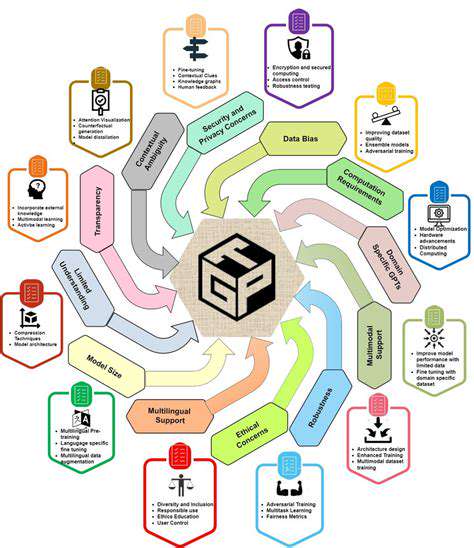
Emerging Trends and Opportunities
The field of artificial intelligence is experiencing rapid advancements, and this presents both exciting opportunities and significant challenges for the future. One of the most promising avenues is the development of more sophisticated and adaptable AI systems. These systems will need to be able to learn and adapt to new situations much more quickly and effectively than current models, allowing for broader applications across various industries. This will require significant advancements in machine learning algorithms and the development of new architectures that better mimic the human brain's ability to learn and reason.
Furthermore, the increasing accessibility of powerful computing resources and the growing volume of data available are creating a fertile ground for breakthroughs in AI. This deluge of data, when properly analyzed and leveraged, can unlock deeper insights and drive innovation in areas like personalized medicine, climate modeling, and financial forecasting. However, responsible development and ethical considerations are paramount to ensure that these advancements benefit all of humanity and do not exacerbate existing societal inequalities.
Another key area of focus will be the integration of AI with other emerging technologies. The convergence of AI with technologies like quantum computing, robotics, and the Internet of Things (IoT) promises to create entirely new possibilities for automation, optimization, and problem-solving. This cross-pollination of ideas could lead to breakthroughs in areas like autonomous vehicles, smart cities, and personalized learning platforms.
Overcoming the Obstacles
Despite the immense potential of AI, several obstacles must be addressed to fully realize its benefits. One significant hurdle is the issue of data bias. AI systems are trained on data, and if that data reflects existing societal biases, the AI system will inevitably perpetuate and even amplify those biases. This can lead to unfair or discriminatory outcomes in areas like loan applications, hiring processes, and criminal justice. Addressing this will require careful data curation and the development of techniques to mitigate bias in training datasets.
Another critical challenge is ensuring the responsible and ethical development and deployment of AI systems. This includes establishing clear guidelines and regulations for the use of AI in various contexts, as well as fostering a culture of transparency and accountability within the AI community. Ensuring fairness and equity in AI applications is crucial to prevent potential harm and promote trust. Moreover, it's essential to invest in education and training to prepare the workforce for the changing job market brought about by AI automation.
Finally, the potential for job displacement due to automation is a valid concern that must be carefully considered. The transition to an AI-driven economy necessitates strategies for reskilling and upskilling the workforce to adapt to new roles and opportunities. This includes investing in vocational training programs, promoting lifelong learning, and supporting entrepreneurship to create new industries and jobs that complement AI-driven advancements.
